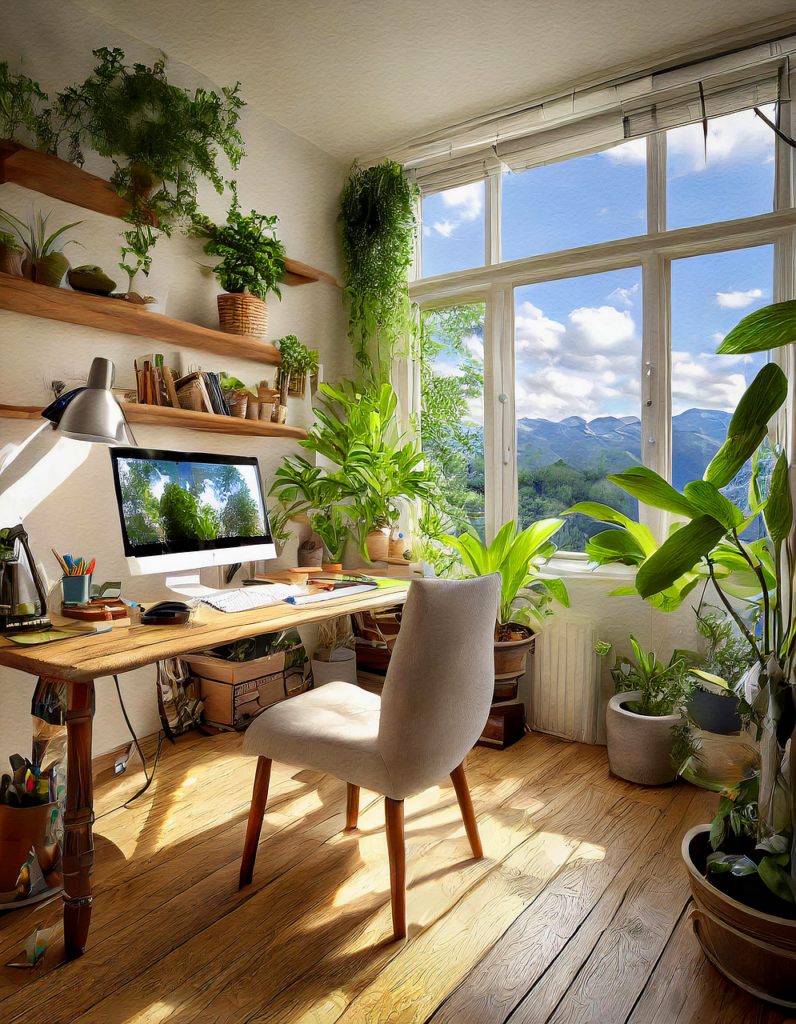Whether you’re working from home full-time, part-time, or just occasionally, creating an effective and comfortable home office is key to maintaining productivity, reducing stress, and supporting overall well-being. A great workspace goes beyond just having a desk and a computer—it involves creating an environment that fosters focus, creativity, and balance. In this blog, we’ll explore four practical ways to make your home office a better working environment so you can work smarter and feel more comfortable while doing it.
- Optimize Your Ergonomics
Spending long hours at a desk can take a toll on your body if your setup isn’t ergonomic. Poor posture, uncomfortable seating, and a bad desk arrangement can lead to muscle strain, back pain, and repetitive stress injuries.
How to optimize your workspace for comfort and health:
Choose an ergonomic chair: Invest in a chair that provides good lumbar support and encourages proper posture. Adjustable height and armrests can also help you maintain a comfortable and healthy sitting position.
Set up your desk at the right height: Your desk should allow your elbows to remain at a 90-degree angle when typing, with your feet flat on the floor or on a footrest.
Use an external keyboard and mouse: If you’re working on a laptop, using an external keyboard and mouse will allow you to position your screen at eye level and keep your wrists in a neutral position.
Why it matters:
A comfortable and well-aligned workspace reduces the risk of physical discomfort and injuries, helping you stay focused and productive without strain or pain.
- Create a Distraction-Free Zone
One of the biggest challenges of working from home is dealing with distractions—whether it’s household chores, family members, pets, or just the temptation to check social media. To be more productive, you need to create a dedicated space where you can focus on your work and minimize disruptions.
How to minimize distractions in your home office:
Designate a specific work area: Choose a spot in your home that is separate from common living areas, if possible. This creates a mental boundary between work and relaxation.
Set clear boundaries: If you live with others, set clear expectations about when and how you can be interrupted. Consider setting office hours or using a “do not disturb” sign when you need uninterrupted time.
Keep your workspace organized: A clutter-free desk helps keep your mind clear and reduces the chances of getting distracted by unnecessary items. Use storage solutions to keep your workspace neat and tidy.
Why it matters:
A focused, distraction-free environment helps you stay on task, reduces stress, and allows you to complete your work more efficiently.
- Improve Lighting and Air Quality
The right lighting and air quality can have a significant impact on your mood, energy levels, and productivity. Poor lighting can strain your eyes, while stale air can make you feel sluggish or fatigued.
How to enhance your office environment with lighting and air quality:
Use natural light: Whenever possible, position your desk near a window. Natural light improves mood, boosts energy, and helps regulate your circadian rhythm.
Add task lighting: If natural light is insufficient, invest in a desk lamp with adjustable brightness. Opt for soft, warm lighting to reduce eye strain.
Improve air quality: Open a window for fresh air or use an air purifier to keep the air clean. Plants are another great option for improving air quality and adding a touch of nature to your space.
Why it matters:
Proper lighting and fresh air can help reduce fatigue, increase focus, and improve overall well-being, making your workspace more conducive to productive work sessions.
- Personalize Your Space for Motivation and Comfort
Your home office should feel like a place where you can thrive, and part of that comes from making the space personal and inviting. By incorporating elements that reflect your personality and style, you’ll create a space that motivates you and makes working from home more enjoyable.
How to personalize your home office:
Add artwork or inspirational quotes: Hang up artwork or motivational posters that inspire you and make the space feel more welcoming.
Bring in plants or greenery: Plants not only enhance the aesthetic of your office but also improve air quality and reduce stress. Choose low-maintenance plants like succulents or snake plants if you’re new to plant care.
Keep comfort items nearby: Whether it’s a cozy blanket, a favorite mug, or a photo of loved ones, having personal items in your workspace can help you feel more at ease and connected.
Why it matters:
A personalized workspace that reflects your tastes and interests helps boost morale, enhances creativity, and makes spending long hours in your office more pleasant.
Conclusion
Creating a better home office environment is about more than just having a place to sit and work. By optimizing ergonomics, reducing distractions, improving lighting and air quality, and personalizing the space, you’ll create a more comfortable, efficient, and enjoyable place to work. A well-designed home office not only enhances your productivity but also supports your overall health and well-being. With just a few thoughtful adjustments, you can transform your workspace into a place where you can work more effectively and feel more comfortable.

